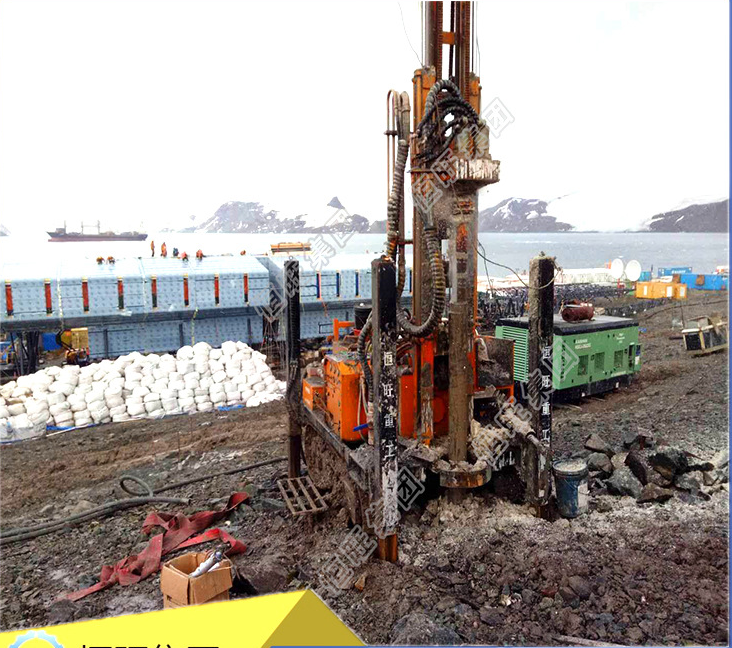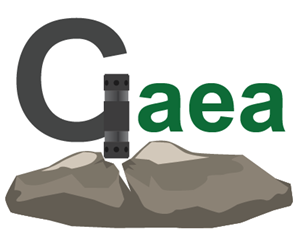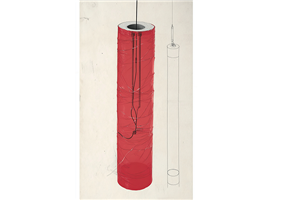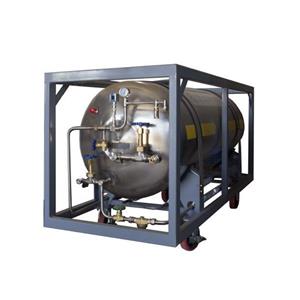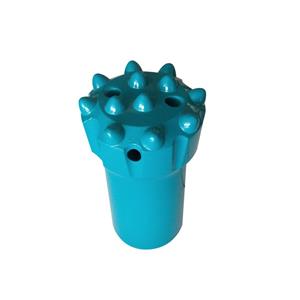Structure of DTH Drilling Rig | Working Principle and Classification of DTH Drilling Rig
Related products Link:
Mechanism composition of large surface DTH drilling rig
1. Drill stand: The drill stand is the guide rail for the rotary device to slide, and the drilling tool to advance and lift.
2. Sliding frame: The sliding frame is a square box structure welded by steel plates to connect and support the drilling frame.
3. Rotary device: This mechanism is composed of hydraulic motor, main shaft mechanism, pressing head, sliding plate and central air supply mechanism. The chain of the propulsion mechanism is fixed on the slide plate through the pin shaft and the spring damping mechanism.
4. Propulsion mechanism: The propulsion mechanism consists of a propulsion hydraulic motor, a sprocket group, a chain and a buffer spring.
5. Rod unloader: The rod unloader is composed of an upper rod unloader body, a lower rod unloader body, a clamping rod cylinder and a rod unloading cylinder.
6. Dust removal device: Dust removal device is divided into dry dust removal, wet dust removal, mixed dust removal and foam dust removal.
7. Walking mechanism: The walking device is composed of a walking frame, a hydraulic motor, a multi-stage planetary reducer, a crawler, a driving wheel, a driven wheel and a tensioning device.
8. Rack: Air compressor unit, dust removal device, fuel tank pump group, valve group, driver's cab, etc. are all installed on the rack.
9. Body slewing mechanism: The mechanism consists of a slewing motor, a brake, a deceleration device, a pinion, a slewing bearing, etc.
10. Drill stand deflection mechanism: This mechanism is composed of a deflection oil cylinder, a hinge shaft and a hinge seat, etc., which can make the drill stand tilt left and right to adjust the drilling angle.
11. Compressor system and hammer: The compressor system is generally equipped with a screw air compressor, which provides compressed air for the high-pressure hammer and the jet cleaning system of the laminar flow precipitator.
The basic composition of general down-the-hole drilling rig
The drilling tool consists of a drill rod, a ball-tooth drill bit and an hammer. When drilling, use two drill rods to drill into the stainless steel plate. The rotary air supply mechanism is composed of a rotary motor, a rotary reducer, and a rotary air supply. The rotary reducer is a closed heterosexual component of the three-stage cylindrical gear, which is automatically lubricated by a screw oiler. The air supply gyrator is composed of a connecting body, a seal, a hollow main shaft and a drill pipe joint, etc., and is provided with a pneumatic grip for connecting and unloading the drill pipe. The lifting pressure regulating mechanism is made by the lifting motor to realize the lifting action of the rotary mechanism and the drilling tool with the help of the lifting reducer and the lifting chain. In the closed chain system, a pressure regulating cylinder, a movable pulley block, and a waterproofing agent are installed. During normal operation, the movable pulley block is pushed by the piston rod of the pressure regulating cylinder to make the drilling tool realize decompression drilling.
How a down-the-hole drilling rig works
The working principle of the down-the-hole drilling rig is the same as that of the ordinary impact rotary pneumatic rock drill. The pneumatic rock drill integrates the impact slewing mechanism, and the impact energy is transmitted to the drill bit through the drill pipe; while the down-the-hole drill separates the impact mechanism (impacter) and dives into the bottom of the hole. No matter how deep the hole is, the drill bit is directly installed on the On the hammer, the impact energy does not need to be transmitted through the drill pipe, thus reducing the loss of impact energy.
With the increase of drilling depth, the loss of rock drilling capacity at submersible rods and joints (medium and deep hole drilling) increases, the drilling speed decreases significantly, and the cost increases. In order to reduce the loss of capacity and improve the drilling efficiency, a down-the-hole drilling rig was designed in practical engineering. The down-the-hole drilling rig is also powered by compressed air, and the rock is broken by rotary impact to form a hole. Its working principle is that the pneumatic hammer of the DTH drill is installed at the front end of the drill rod together with the drill bit. When drilling, the propulsion mechanism continuously advances the drill tool and applies a certain axial pressure to the bottom of the hole, so that the drill bit and the bottom of the hole are connected. The rock is in contact with the rock; the rotary mechanism makes the drilling tool rotate continuously, and the hammer installed in front of the drill pipe, under the action of compressed air, makes the piston reciprocate to impact the drill bit to complete the impact on the rock; the compressed air enters from the rotary air supply mechanism and passes through the The hollow rod reaches the bottom of the hole, and the broken rock powder is discharged from the annular space between the drill rod and the hole wall to the outside of the hole. It can be seen that the essence of down-the-hole rock drilling is the combination of two methods of breaking rock under the action of axial pressure, impact and rotation, in which impact is intermittent, rotation is continuous, and rock is under impact and shear force. It is continuously crushed and shredded under the action. In down-the-hole rock drilling, the impact work plays a leading role.
Classification of down-the-hole drilling rigs
The structure of down-the-hole drilling rig is divided into two types: integral type and split type. According to the exhaust mode, it is divided into two types: side exhaust and central exhaust. According to the shape of the cemented carbide embedded on the working surface of the DTH drilling rig, there are blade type DTH drilling rigs, column tooth DTH drilling rigs, and chip-to-the-hole drilling rigs. Type DTH drilling rig.
The integral DTH drilling rig is a single DTH drilling rig with the head and tail integrated. It is easy to process, easy to use, and can reduce the loss of energy transmission. The disadvantage is that when the working face of the down-the-hole drilling rig is damaged, the whole is scrapped. The head of the split DTH drilling rig is separated from the tail (shank shank) of the DTH drilling rig, and the two are connected with a special thread. When the head of the DTH drilling rig is damaged, the shank can still be used, saving steel. However, the structure is more complicated, and the energy transmission efficiency string is reduced.
